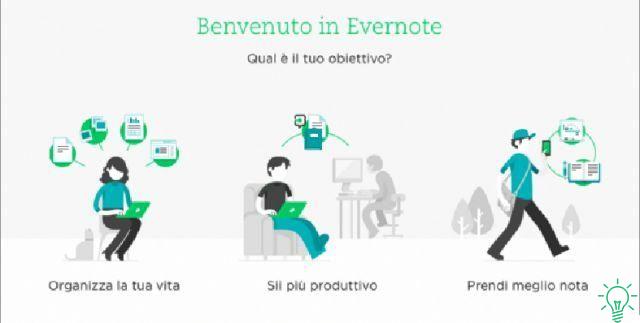
La Tomato technique is a productivity and time management method developed in the late 80s by the Italian American Francesco Cirillo.
Its name derives from those ticking kitchen timers in the shape of a tomato.
Despite its power, the tomato technique has a problem: the fact that it is so simple leads many people to underestimate or disregard it.
Marketing pushes us to think that solutions to problems must necessarily be complex, expensive, articulated.
When, on the other hand, as already seen in the blog for example about the to-do list or the logbook, in the field of personal productivity, a 10 euro equipment and some mental triggers are enough to transform a chronic procrastinator in a war machine.
If you are looking for something that increases the concentration with which you study and work and keeps you glued to your desk even when you have little desire, the Pomodoro technique is the right tool for you.
Today I will tell you:
- As it works
- Why it works
- When you have to use it
- When, instead, NO you have to use it.
How the tomato technique works
Well, first of all, you must have the fundamental tool: the tomato.
If you don't have one of those timer cooking tomatoes, download one of the many free apps that simulate it.
Once you have the timer, to apply the tomato technique you just need to follow these very simple rules:
- Make a list of the activities you need to do
- Divide them into fractions of about 25 minutes
- Set the tomato for 25 minutes and choose an activity
- Work on the activity for 25 minutes, without getting distracted or distracted
- When the tomato rings, put an X on a piece of paper, next to the name of the finished activity.
- Take a 5 minute break and start over with another tomato and another activity.
- Every 4 tomatoes, take a longer break (15-30 minutes)
- If you get distracted or get interrupted, the tomato is invalid
Simple isn't it?
So let's see why it is so effective.
Why the tomato technique works
When using the Pomodoro technique, the start and completion of a task they are never left to chance, but they follow a precise pattern.
For example:
- you start when you turn the timer, finish when the tomato rings
- you don't spend more or less time on the activity depending on your mood
- you do not allow anything or anyone to distract you
- you rest when and as established, not how and when it comes to you.
This causes the generic “study / work for 4 hours"And the specific"I make 8 tomatoes”, The time you need is the same, but there is one big difference in results.
Difference that depends on 4 main reasons:
# 1 The tomato technique makes you a master of planning
Most people have a tendency to work off the cuff, with little or no planning.
That is, every day they start their activities without having clearly established what needs to be done and by when.
As well as, as I tell in the article on Parkinson's law, "The work expands to take all the time available"
This does not happen when you use the tomato technique:
Indeed:
- First, having to divide your work into tomatoes, you are forced to estimate a priori difficulties and necessary times, giving you goals and limits.
- Then, since each tomato is dedicated to one and only one activity, increase your mental focus by avoiding multitasking.
- Finally, through the constant comparison between valued tomatoes to do an activity ei achieved results, you become more and more proficient in your estimates.
Also, when you use the tomato technique, you find yourself a view things completely differently.
Many of my students write me things such as:
“Today I do 5 private law tomatoes"
"I miss them 2 tomatoes at the end of the book ",
“To learn beta-lactam antibiotics it takes at least 100 tomatoesi ”
In short, they got used to sharing what they have to do in discrete units, always the same, and which by definition are followed by a 5 minute break. In short, in tomatoes.
And which on top of that they have a quite catchy name from positively affect their psychological attitude.
Because it is easier to say to yourself "I sit and make a tomato" than "I sit and study the classification of penicillins".
Also, another psychological advantage, there are no easier tomatoes or more difficult tomatoes: each tomato is equal to itself.
Because its substance is, ultimately, 25 minutes of unconditional attention that you dedicate to something, followed by 5 minutes of rest.
# 2 The tomato technique improves your willpower
In the article Why New Year Resolutions Fail, I highlighted the two mistakes they make us have little willpower:
- Focus on goals too big
- Focus on too many goals all together
And I also quoted the mythical Zen phrase:
“How do you eat an elephant? One bite at a time "
From this point of view, the tomato technique is ideal when you are in a period of unwillingness to study.
Because a 25-minute tomato is something that simultaneously:
- it is quite small to be tolerated by our willpower
- it's big enough to allow the carrying out of a significant minimum activity
In short, a 25-minute tomato is a ideal bite.
And the sum of many bites of ideal size makes you eat your elephant quickly, and without it remaining on your stomach.
# 3 The tomato technique improves your focus
The tomato technique favors concentration for several reasons, intrinsic to the rules of the technique itself:
- When you apply the tomato technique, each tomato must be dedicated to one and only one activity.
- If any thoughts come to distract you, you are only allowed stop for a moment to mark it on a piece of paper.
- If someone interrupts you the tomato is no longer valid, so phone and internet are off during the tomato
But there is one aspect forgotten by many, and which is very important to me:
The damn ticking of the timer.
It can be annoying at first. And, if you just don't tolerate it, you can choose tomatoes or apps where you can suppress it.
But I advise you to try to put up with it.
After a while, in fact, you consciously no longer perceive it, but it helps you in an almost hypnotic way to descend to a state of greater concentration. At least, that's what happens to me and many others.
# 4 The tomato technique fortifies the formation of habits
In my book The Kata of Will I explain, far and wide, how to build a will of steel.
But one of the cruxes of it is very simple: when something becomes a habit, even if it is not a particularly pleasant activity, it costs us little effort of will, and it is therefore easier to do.
But how is a habit formed?
As I explain both in the book and in the article How to change habits and transform yourself, a habit is formed through the repetition of the loop:
- stimulus
- action
- reward
Imagine then prendere in your hand the tomato you bought, rotate it about half a turn to load it, and then start studying.
You are now used to its ticking, which does not bother you at all, on the contrary, accompanies you with its rhythm.
Time passes almost without you noticing it, and when the tomato suddenly starts trilling, you know at the same time:
- that you ran out of another tomato. Wow!
- that you have to write down the end of the tomato in your notebook
- that you have a 5-minute break to distract yourself and relax
When I think about this sequence, my knowledge of behavioral psychology leads me to reflect on the fact that the tomato technique is, above all else, a ritual, complete with:
- initial stimulus (starting the tomato)
- action (the next 25 minutes of activity)
- little final gratification (pause + annotation of finished tomato)
And as such it is able to fortify your habit of making tomatoes while staying focused to the maximum.
What to do in the 5 minute break?
The 5-minute break is just as important as the 25-minute activity.
According to Francesco Cirillo, inventor of the technique, you must avoid any activity that requires mental effort in those 5 minutes.
Se paragoniamo the tomato technique to a circuit of exercises in the gym, the 5-minute break is the 25-minute activity as muscle stretching is the exercise under stress.
First, then, get up from your table and walk away.
This way you will match mental and physical distancing from work.
Since you spend a lot of time sitting while studying or working, I recommend you do a light physical activity.
Like walking, or trying some simple yoga poses.
Massaging your neck and shoulders while taking a deep breath is also fine, as it releases the tension before the next tomato.
The idea is that of let your blood circulate a little, stretch your legs and back, and relax.
So avoid rushing to facebook or emails. Instead, dedicate a whole tomato to this type of activity instead, so they too will have a beginning and an end and, from distracting elements, they will also become part of your daily planning.
When to use the tomato technique
Francesco Cirillo invented the technique to improve his studio performances.
However, I have many readers who use it successfully also in the workplace, when training, and even to manage free time.
As mentioned earlier, even filling / leisure / distraction activities, such as being on social media, can be managed better if framed within one or more tomatoes.
In this way you will dedicate the time you decide to dedicate to them, and you won't get carried away as often happens.
However, there are situations in which the tomato technique may not be the best choice.
Tomato technique: when NOT to use it
Most people approach study, work, commitments, in a manner very poorly structured.
And it certainly happens to you too, often, to find yourself sitting at your desk but distracted, with no clear goals, and having little or no planning.
The tomato technique then makes you more productive because it is a simple and intuitive tool that:
- It makes you plan
- It makes you focus
- It helps you not to get distracted
- Rewards you
- Makes you monitor the progress of your work (in terms of quantity of tomatoes)
- It helps you structure your activities into habits, decreasing the willpower required to carry them out
- It makes you rest at regular intervals
In short, as we said, it makes you manage study time well.
However, even the tomato technique has its limits, which moreover they are the other side of his virtues.
Agility and mental depth
Since the activities are broken up into blocks of 25 minutes, the Pomodoro technique is Partner for the activities in which they are mainly needed agility and mental speed.
But it is instead poor when it comes to doing activities involving the mental depth. That is, they require a lot of reflection and creativity.
For the latter, in fact, the brain needs time to immerse itself in them completely, and only then is it able to give its best.
I think a good practical example of what I mean can be found in the studios.
When one studies, there are activities such as skimming and speed reading which are ideal for the Pomodoro technique. As well as storing data, with or without memory techniques.
While when you have to:
- Understanding something really difficult
- Develop your own theory
- Establish deep connections between apparently very distant elements of knowledge
- Solving complex problems
Well, then the tomato technique is not the most suitable.
In fact, there is a part of the study where you have to go to the bottom and immerse yourself completely.
This part normally is small compared to the hours to devote to everything else you have to study.
But it is also
- more interesting, linking better to dimensions such as inspiration, self-esteem and motivation.
- more difficult conceptually, since he leaves the routine of studying to enter the dimension of "think"
For these small but complex study activities, where it is necessary to do deep reflections and processing of data, the ideal method is the exact opposite of the chopping you do with the tomato.
The ideal method is in fact, in my opinion, the so-called Deep Work, theorized by Cal Newport in his bestseller.
That is thetotal immersion, without interruptions, seeking the limits of the depth of thought.
The same thing happens in many areas.
For example, when I write:
- I use tomatoes if I simply have to put on paper something I already know well.
- instead I need long consecutive hours of reflection if I have to give birth and analyze new ideas.
With deep work, in short, you go slower, but much farther.


























